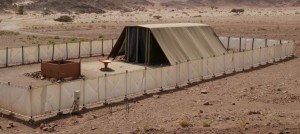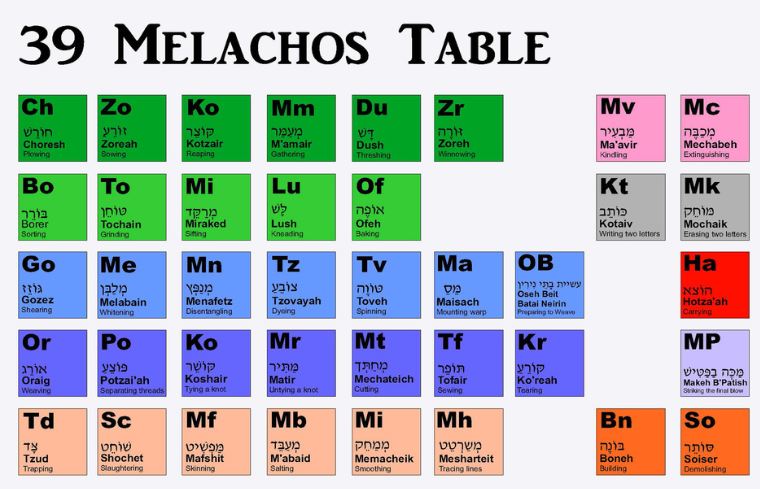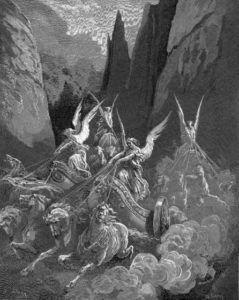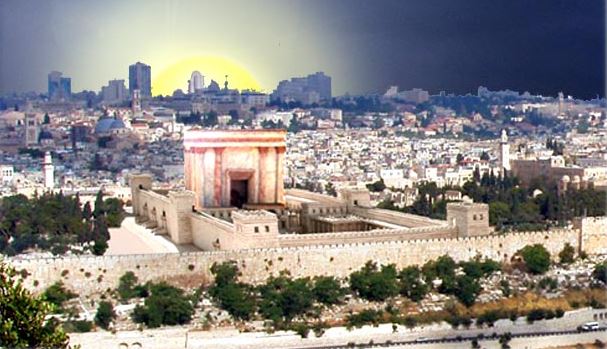 In this week’s parasha, Lech Lecha, God forges a covenant with Abraham and promises Abraham that his offspring will be as numerous as the dust of the earth (Genesis 13:17) and the stars of heaven (15:5). The Midrash (Lekach Tov) comments on this by stating that “So, too, are [Abraham’s] children: When they rise, they rise as high as the heavens; when they fall, they fall as low as the dust.” Israel is compared to both stars and dust simultaneously. Peering a little further, there is actually a much more profound, scientific connection hiding in this statement.
In this week’s parasha, Lech Lecha, God forges a covenant with Abraham and promises Abraham that his offspring will be as numerous as the dust of the earth (Genesis 13:17) and the stars of heaven (15:5). The Midrash (Lekach Tov) comments on this by stating that “So, too, are [Abraham’s] children: When they rise, they rise as high as the heavens; when they fall, they fall as low as the dust.” Israel is compared to both stars and dust simultaneously. Peering a little further, there is actually a much more profound, scientific connection hiding in this statement.
According to modern scientific understanding, the dust of the earth and the stars of the cosmos are intricately linked. Where did the dust of the earth come from? For that matter, where did all elements of Earth, and its entire mass of material, come from? The scientific answer may at first sound blasphemous, but actually fits neatly with the Torah and the ancient teachings of our Sages. Scientists believe that Earth (and the entire Solar System) formed about 4.5 billion years ago (on the issue of the age of the universe, see here), probably from the remnants of a previous star that exploded in a massive supernova. The supernova resulted in a nebula of dust and gas, that then reformed into new worlds.
Going back to the very beginning, the first element to form in the universe was simple hydrogen, with just one proton and one electron. It remains the most abundant element in the cosmos. In our sun, hydrogen atoms fuse together under immense pressure to form helium, the second element (with two protons and two neutrons). Eventually, as hydrogen will start to run out, even helium atoms will start participating in fusion. This will give birth to the first and lightest metal, lithium (three protons), and then beryllium (four protons), and so on. This process generally keeps going until iron (26 protons), the most stable atom and most abundant metal in the universe. When a star explodes, or when neutron stars merge, even heavier elements may be generated, including gold and silver.
As such, it is believed that planet Earth condensed from the minerals spewed out of an exploding star long ago. The lithium and iron we mine from the ground were once part of a star! In fact, the very atoms that make up our bodies were once part of the stars, too! The Torah tells us that the body of Adam was made from the dust of the earth (Genesis 2:7), yet the dust of the earth itself was forged in the stars. With that in mind, we can have quite a literal understanding of God’s statement to Abraham that his children are both dust of the earth and stars of heaven. It also allows us to appreciate the ancient mystical teaching that man is an olam katan, a “mini-universe” or microcosm of the universe (see, for instance, Zohar III, 33b, Ra’aya Mehemna) while the universe is, in turn, an adam kadmon, a “primordial man”.
The big question is: what do we make of these scientific statements? Might they be true? Could Earth have formed from the destruction of previous worlds? Amazingly, our Sages taught exactly that!
Disorder to Order
The Torah states that before God created our world, space was tohu v’vohu and a tehom, a chaotic and unformed abyss. What does this really mean? King Solomon stated in Ecclesiastes 3:11 that God “made everything precisely at its time; even the world…” [gam et ha’olam] In the Midrash, Rabbi Tanchuma explains that this means even the Earth had a specific time when it could be created (Kohelet Rabbah 3:11). Rabbi Abahu then teaches: “We learn from this that the Holy One, blessed be He, would create worlds and destroy them, create worlds and destroy them…” until He finally made a world that “pleased” Him. Rabbi Elazar concludes by suggesting this is alluded to by the great tehom before Earth’s formation, and says this is why God ultimately stated that everything He made was “very good”. God was finally satisfied!
Thus, long ago our Sages already taught what modern science has recently come to realize: our Earth itself was made from the remnants of previous worlds that God had destroyed! It is amazing to think that the wedding ring on your finger—meant to symbolize an eternal bond—is made from gold atoms made by God billions of years ago in a massive cosmic blast, or that the iron coursing through your veins was forged by God in the furnace of an old star. It gives such things immensely more meaning.
On that note, it is important to remember that God programmed the universe with certain unyielding natural laws (as stated, for instance, in Jeremiah 33:25). And God generally follows His own rules, working through derekh hateva, “natural ways”, as our Sages taught. It therefore isn’t surprising that He also generated all the many worlds of the universe through natural means.

A “star factory” nebula in the constellation Aquila
Intriguingly, the last Mishnah in the tractate Uktzin famously states that God made 310 worlds for each tzadik, to be enjoyed in the World to Come. This is based on Proverbs 8:21 where God promises He will reward those who love Him with yesh (יש), “substance”, the value of which is 310. It is also God’s “gift” to the righteous, since the value of “gift”, shai (שי) is 310. Going back to the Midrash above, our Sages imply that God made a multitude of worlds that pleased Him, not just the one which we inhabit now. This is probably referring to all the wonderful worlds He made—through derekh hateva, the laws of nature—for the righteous, 310 each, to inhabit in the future. And for those who like gematria, it is fitting that the value of derekh hateva (דרך הטבע) itself is 310!
A final thought: what can we learn from the notion that Abraham’s offspring are both dust of the earth and stars of heaven? Or, in other words, as the old saying goes, that “we are stardust”? We can learn from this that even if we see ourselves as minute and insignificant, a fleck of dust in the vastness of space, God nonetheless always sees us as His precious, glowing stars.
Shabbat Shalom!





